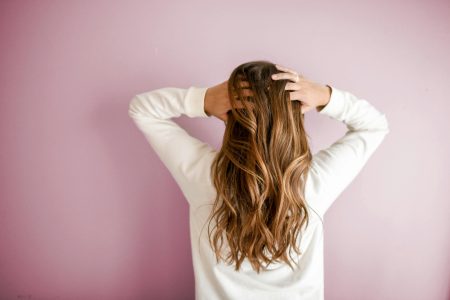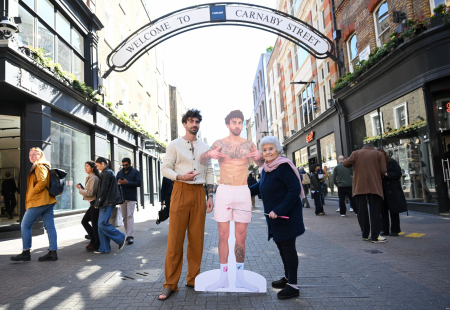- ‘Google searches for ‘Why can’t I sleep?’1 and ‘How to fall asleep instantly’2 have surged by 200% and 130%, respectively, in the past 3 months.
- ‘Things to help you sleep’3 has amassed over 286k searches in the past year.
- Martin Seeley, Senior Sleep Expert at MattressNextDay, shares his insights on whether trending sleep hacks are beneficial.
Tossing and turning at night? You’re not alone. Google searches for ‘Why can’t I sleep?’1 have shot up by 200% in the past three months and with over 286,000 annual searches for ‘Things to help you sleep,’3 it’s clear that sleep struggles are keeping a lot of us up at night.
From TikTok trends like the Sleepy Girl Mocktail to viral sleep hacks like the cognitive shuffle and white noise soundscapes, the internet is full of tips promising better rest. But which ones are actually worth trying and which ones would you lose sleep over?
To cut through the noise, Martin Seeley, Senior Sleep Expert at MattressNextDay, breaks down social media’s popular sleep hacks and whether they really work.
Sleepy girl mocktail
If you’ve been scrolling through TikTok lately, you’ve probably seen the Sleepy Girl Mocktail, with over 11.5k posts under the hashtag4. It’s been the go-to drink for winding down and getting ready for bed. This viral, non-alcoholic bedtime drink combines tart cherry juice, magnesium powder, and sparkling water (or prebiotic soda) for a refreshing, calming sip before sleep.
Does it actually work?
The mocktail contains tart cherry juice which is a natural source of melatonin and tryptophan. According to Martin, “Melatonin helps regulate the sleep-wake cycle, and tryptophan helps produce serotonin which plays a role in sleep regulation.”
Magnesium powder also adds its own sleep boosting benefits, as Martin adds: “Magnesium helps regulate healthy levels of GABA, a neurotransmitter that promotes calm and relaxation.”
While it’s not a medically proven sleep aid, Martin points out, “Its ingredients have some properties that could support sleep, and it may help signal bedtime to your body – a sort of relaxing nightly ritual.”
He recommends that it’s best used in conjunction with established sleep hygiene practices, such as maintaining a consistent sleep schedule, creating a restful environment, and limiting screen time before bed.
Cognitive shuffle technique
The “cognitive shuffle” is a sleep trick that’s taken off online, designed to stop your mind from racing with late-night thoughts, the technique involves imagining random, unrelated images or words to keep your brain distracted.
Choose a simple word, like “SLEEP,” and for each letter, think of something completely random that starts with it (like “Socks,” “Lemon,” “Elephant”). Picture each one briefly, then move on to the next. It’s a fun way to quiet your mind and help you fall asleep.
Does it actually work?
With searches for the ‘Cognitive shuffle technique’5 jumping by 2,833% year on year, Martin notes that, “This technique can be a really effective tool for people who struggle with intrusive thoughts at bedtime as it mimics how the brain naturally drifts into dreaming.”
“However, it’s not a cure all. If you’re dealing with more serious sleep issues like insomnia or anxiety, pairing it with other techniques like CBT-I or relaxation exercises might work better.”
Scandinavian sleep method
Ever found yourself wide awake because your partner’s hogging the duvet? That’s exactly what the Scandinavian sleep hack aims to fix. ‘What is the Scandinavian sleep method’6 is currently trending online, and the trick is simple: share the bed, not the blanket. Each person gets their own duvet, which means no more midnight tug of war, fewer disturbances, and better temperature control, therefore a way better night sleep.
Does it actually work?
It might not solve all your sleep problems, but Martin suggests, “The Scandinavian duvet hack can make a real difference. Getting uninterrupted sleep is key for hitting those deeper, more restorative stages, like REM, and something as simple as having your own blanket can help.”
“It’s a great example of a small, stress-free change to add to your sleep routine, especially for couples constantly waking each other up.”
White & brown noise
If you’re struggling to drift off because of noisy neighbours, traffic, or a snoring partner, that’s where white and brown noise may come in handy.
White noise is that classic fan-like hum (think TV static), great for blocking out sudden sounds that might wake you up. Brown noise, on the other hand, is deeper and more soothing – imagine distant thunder or a soft waterfall. Brown noise is having a moment online and TikTok, with average monthly searches for “brown noise”7 over 18k, thanks to its deeper, more mellow sound that many find super calming.
Both work by creating a steady, calming background sound that helps your brain tune out disruptions and associate the noise with winding down. It’s like a cosy audio blanket for your brain.
Does it actually work?
For lots of people, it really can make a difference. Martin notes, “Listening to white or brown noise at bedtime can help quiet a racing mind, reduce the impact of disruptive environmental sounds, and make it easier to fall and stay asleep for longer.”
“Listening to these consistent soundscapes can also ease nighttime anxiety and support those with sensory sensitivities by creating a calming, predictable environment that signals it’s time to wind down.”
White noise has been shown to help toddlers fall asleep by creating a consistent sound environment that masks disruptive noises. It can be particularly beneficial for children with ADHD, improving their memory, verbal tasks, and reducing anxiety.
It’s not for everyone though as some may find the constant hum more annoying than relaxing.
To read more advice on how to better your sleep and perfect your bedtime routine, please visit https://www.mattressnextday.co.uk/snooze-news/post/the-ultimate-bedtime-routine









